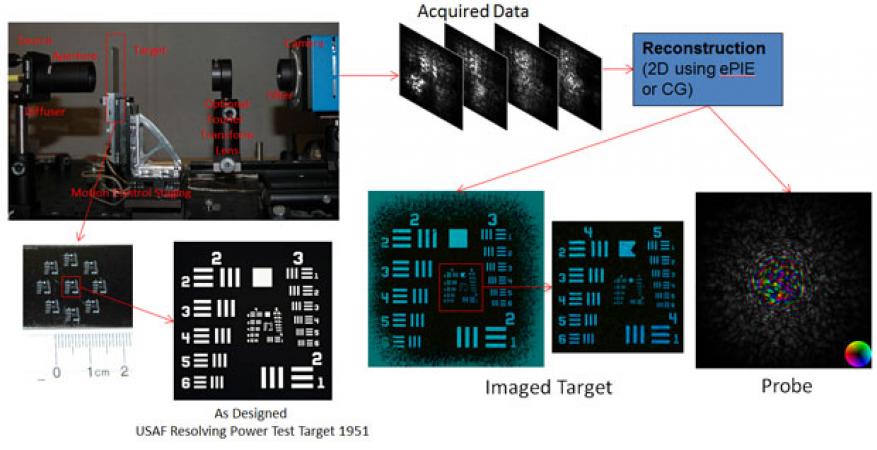Jeffrey Kallman (15-ERD-028)
Project Description
Imaging with scanning coherent diffraction ("ptychography"), a form of microscopy recently made practical by new computational algorithms, is useful in cases when it is difficult to make an effective lens for an electron or x-ray probe and when it is desired to image both phase and attenuation. The data used to form images are collected by acquiring diffraction patterns from overlapping regions on the subject. We plan to accelerate the reconstruction of ptychographic data, which is an iterative process and for which a number of techniques have evolved. Ptychography could be a powerful tool for nondestructive characterization using optical, x-ray, or particle-based imaging, with potential uses from biological imaging to chip assurance. We plan to develop and implement two acceleration techniques. We will build a state-of-the-art reconstruction code suite, develop an optical data-acquisition system, acquire data, and reconstruct it. Once the code suite is validated, we will incorporate the acceleration techniques into it.
If successful, we expect to develop a state-of-the-art ptychographic reconstruction code suite with acceleration techniques that should cut the time required for reconstruction by a factor of between two and ten (depending on the methods used). We will also develop the capability for a flexible optical ptychography data-acquisition system using a microscope with a motorized xy stage (horizontal and vertical axes) and an integrated camera and laser light source. Using this system, we will prepare microscope slides of single- and multiple-layer subjects and acquire test ptychographic data. With this project, we will gain experience in the use of ptychography for computer chip assurance. There is also the potential to create new intellectual property on the acceleration techniques we develop.
Mission Relevance
This capability in new nondestructive characterization is rooted in the Laboratory's core competency of high-performance computing, simulation, and data science to evaluate the performance of existing systems for which physical testing is extremely limited.
FY16 Accomplishments and Results
In FY16 we (1) implemented two acceleration techniques for ptychographic reconstruction, which worked as expected; (2) constructed an optical test bed for ptychography (see figure); (3) acquired data for reconstruction; and (4) generated conjugate gradient algorithms for reconstructing layered specimens that we found to be superior to state-of-the-art algorithms.






